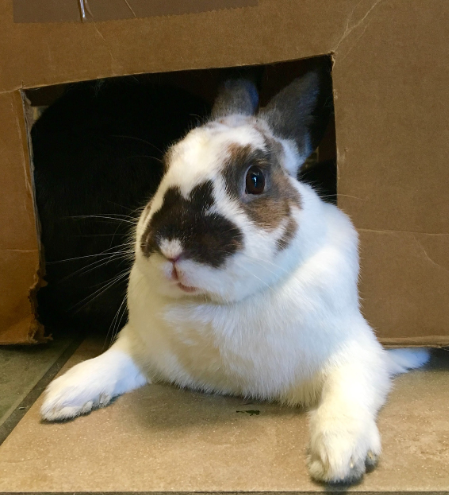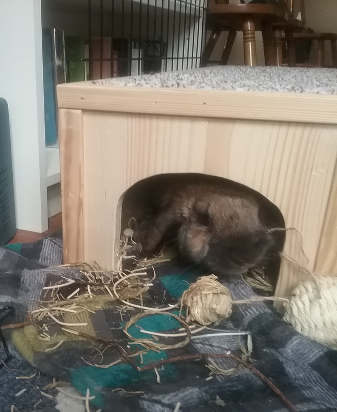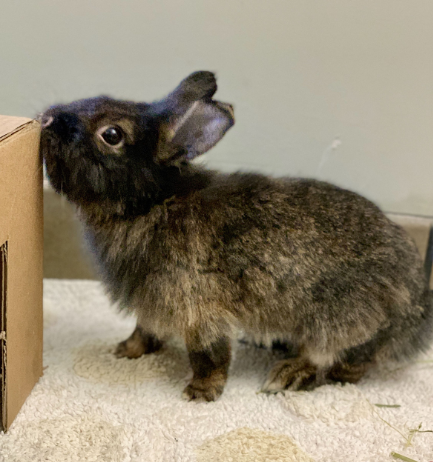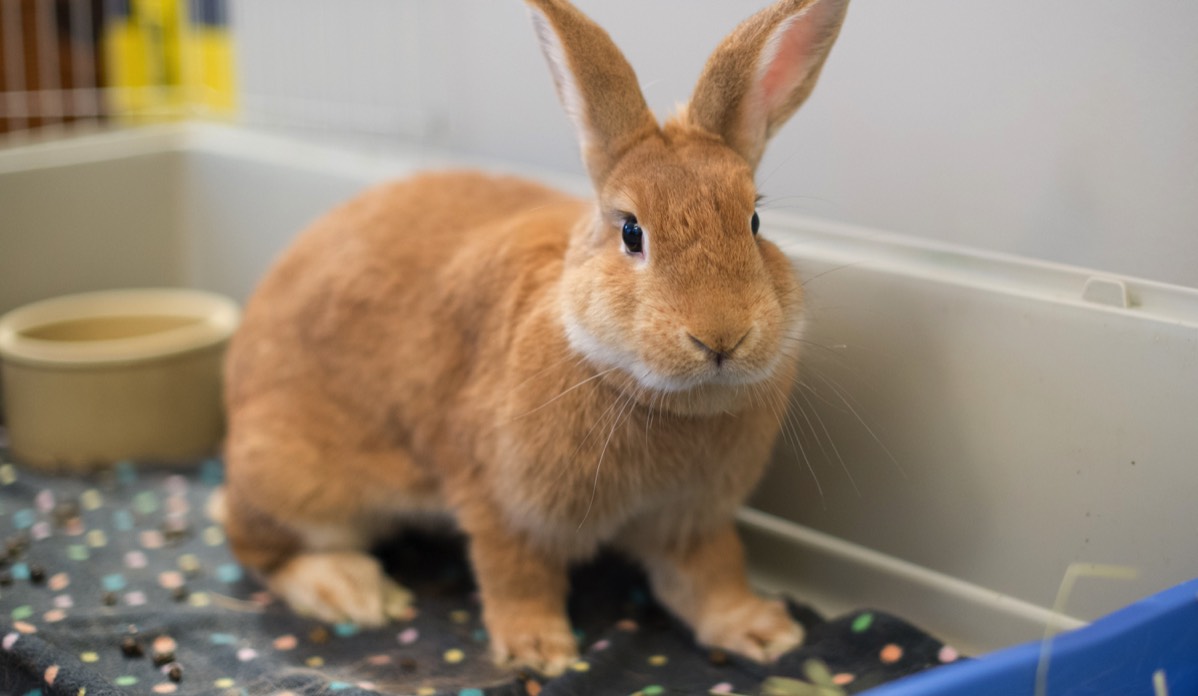
The rabbit nose knows
Wednesday, March 18, 2020
by Jenna Spain
The Bunny Nose Twitch

Humans don’t need to scrunch up our noses with every breath, so why do bunnies move their noses so much? Nose “blinking” or “winking” are alternative terms for the iconic bunny nose twitch, where the rabbit shifts his nose up and down with each sniff. Aside from being adorable, the nose twitch also serves an important function to enhance the rabbit’s sense of smell. As the rabbit shifts his nose up, his nasal passages open wider to increase the airflow over his olfactory senses. More air brings in more information for the rabbit’s nose to detect.
A rabbit will twitch his nose faster and more forcefully when he needs to gather information about his environment. This is an important behavioral cue for bunny owners note. A rabbit rapidly twitching his nose may be stressed or more alert. At one moment, your bunny may appear to be asleep and barely moving at all, and will suddenly start sniffing at turbo speed when he hears a sudden noise! The rabbit has been startled and is trying to determine if there is any danger nearby.
Rapid sniffing when the rabbit is otherwise relaxed may also indicate that he is curious or interested about whatever is in the room and wants additional information - particularly about food and treats!
 The Nose as a Navigator
The Nose as a Navigator
Another important feature of a rabbit’s nose are his whiskers, which help the rabbit navigate in the dark, or in other spaces where he can’t see that well. A rabbit’s whiskers are naturally as long as his body is wide (unless you have a particularly well fed bunny who may be a bit wider than nature intended!), to help the rabbit determine whether he will fit into dark or narrow spaces. In the wild, this would be critical in burrows underground, or hiding under bushes and other ground cover. In your home, bunnies may still want to use their whiskers to explore areas where you may not necessarily want them to be, such as behind the couch or under the bed. It’s important to bunny proof your home to prevent your rabbit from accessing spaces where they can’t easily be retrieved and to provide safe outlets for the rabbit’s natural desire to burrow and explore.
Cardboard boxes are a cheap and easy way to fashion rabbit tunnels and build your own bunny playground, or you can purchase pre-built structures made from untreated wood or cardboard in a variety of shapes and sizes to fit your bunny and the space available in your home.
 Rabbit Interaction
Rabbit Interaction
Rabbits will also use their noses to interact with other animals and objects in their environment. When a rabbit wants to move something out of his way, he won’t use his paws - he will push with his nose.
Rabbits are able to nudge open doors that aren’t entirely closed, or push over objects that may be left leaning against the wall or on the edge of the couch. Even the smallest rabbit can still make his presence known!
Humans who may be focusing on something other than the bunny in the room should also be prepared for nose pokes as the rabbit’s way of asking for your attention - I’ve received several pointed nudges just while writing this blog!


 The Nose as a Navigator
The Nose as a Navigator
 Rabbit Interaction
Rabbit Interaction